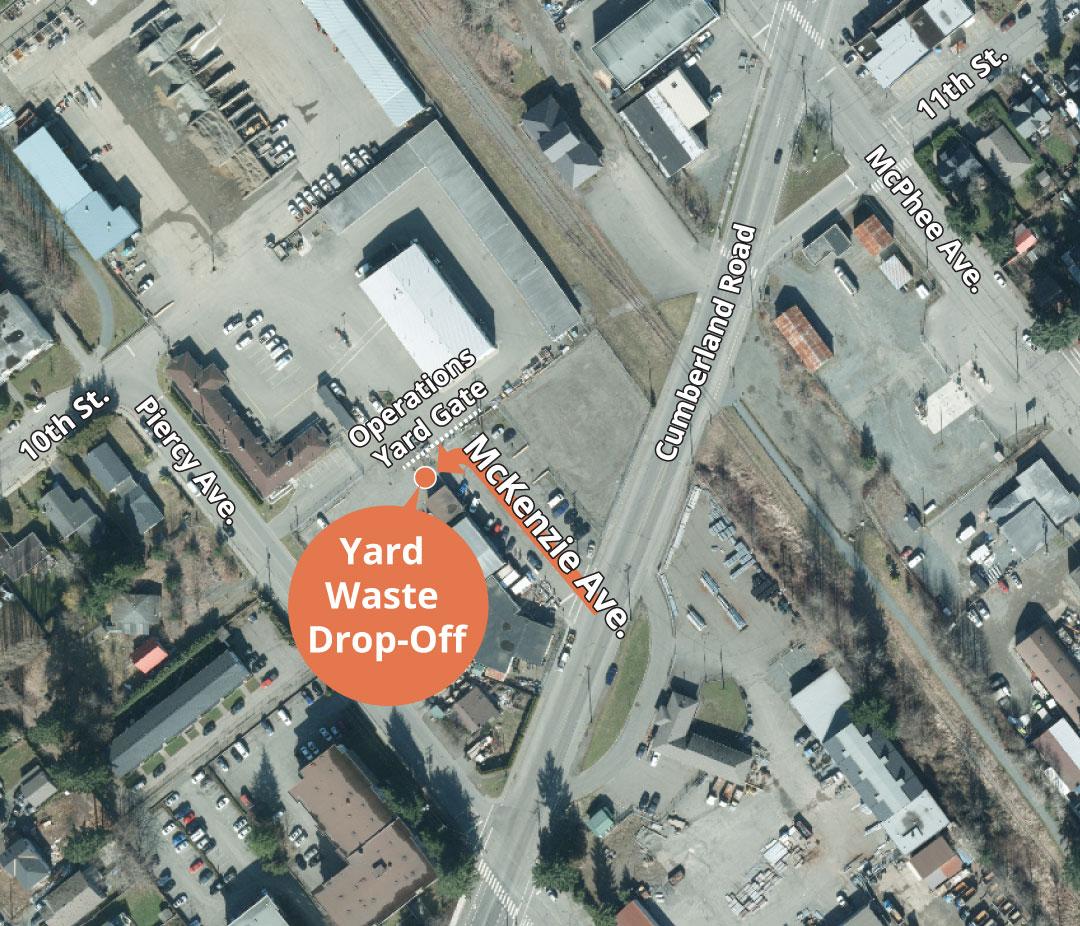Organics is collected every week in Courtenay. This includes yard and food waste. View collection zones and schedule for more information.
Seasonal yard waste drop-off will be offered between November 1 to 28, 2025, at the end of McKenzie Avenue, next to the City Operations Centre.
How to set out your cart
- Place your organics cart (green lid) at the curb between 5 a.m. and 8 a.m. on your collection day.
- Position it close to the road, but do not block traffic, sidewalks or bike lanes.
- Leave at least 1 metre (3 feet) of space around each cart.
- Ensure there is 3 metres of clearance above the carts.
- The lid must be completely closed, with the arrows pointing toward the street. Leave the lid in the unlocked position if the cart:
- is more than 75 per cent (3/4) full
- only contains a small amount of food waste
- only contains yard waste
- Do not include:
- compostable or biodegradable bags
- paper bags with bioplastic or cellulose (shiny) lining
If you aren’t sure whether an item can go in your organics cart, use our interactive Waste Wizard tool.
For more details, including cart placement on streets with bike lanes or on-street parking, see the automated curbside cart collection guide [PDF/1.1MB]
Important reminders
- Use standardized carts. Personal carts will not be collected. (See collection carts for more information.)
- Extra material outside the cart will not be collected.
- Lock the lid when the organics cart is not set out for collection, unless you have it stored in a garage, shed or other secure location.
Missed collection
If your organics cart was not picked up, contact Operational Services.
Seasonal yard waste drop-off
Offered this autumn from November 1 to 28, 2025.
Courtenay residents with curbside collection can drop off extra yard waste for free during this seasonal program. This is for yard waste that doesn’t fit in your green organics cart.
Comox Strathcona Waste Management (CSWM)
The Comox Strathcona Waste Management (CSWM) service is a function of the Comox Valley Regional District (CVRD). They are responsible for two regional waste management centres that serve the Comox Valley and Campbell River. CSWM is working in partnership with the City of Courtenay, City of Campbell River, Town of Comox and Village of Cumberland to manage organic waste at the new regional compost facility. Diverting food and yard waste helps extend the lifespan of the landfill and reduce harmful greenhouse gases.

